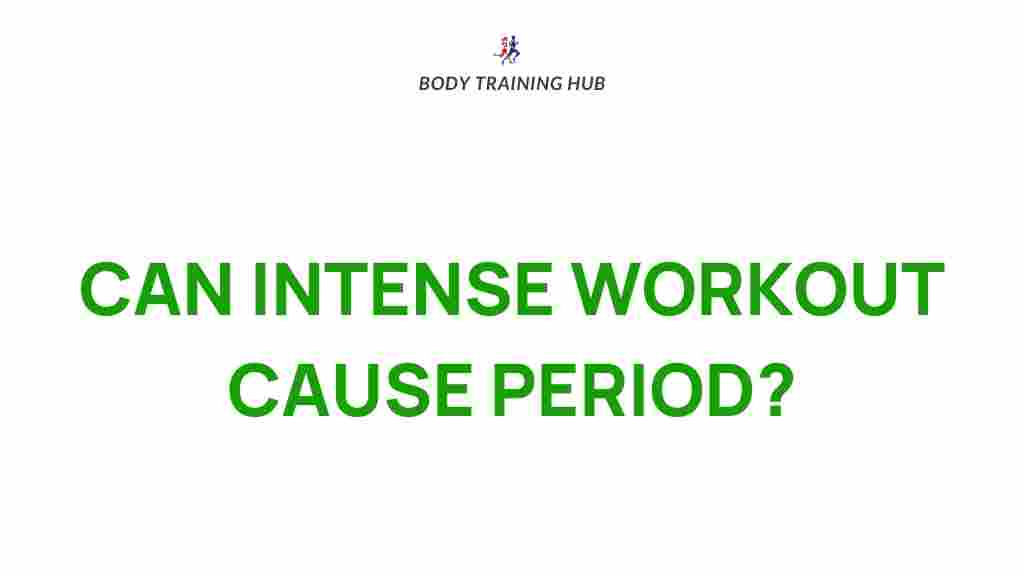The Effects of Intense Workouts on Menstrual Cycles
For many women, maintaining a consistent fitness routine is key to achieving health and wellness goals. However, engaging in intense workouts can have a noticeable effect on various bodily functions, including the menstrual cycle. While exercise is typically beneficial, overexertion can sometimes disrupt hormonal balance, leading to changes in menstruation.
In this article, we’ll explore the relationship between intense physical activity and menstrual health. We’ll also provide tips to help you manage these changes effectively and maintain both your fitness and reproductive health.
Understanding the Menstrual Cycle
The menstrual cycle is regulated by a complex interplay of hormones like estrogen and progesterone. These hormones are responsible for ovulation, preparing the body for potential pregnancy, and the eventual shedding of the uterine lining if pregnancy does not occur. Changes in physical activity, especially when it involves intense workouts, can disrupt this finely tuned process.
How Intense Workouts Influence Menstrual Health
Intense physical activity can lead to several changes in menstrual cycles, which include:
- Irregular Periods: Excessive exercise can cause fluctuations in the regularity of menstrual cycles, making periods shorter, longer, or completely absent (a condition known as amenorrhea).
- Changes in Flow: Some women may notice a lighter flow, while others could experience heavier bleeding.
- Hormonal Imbalances: High-intensity training can reduce estrogen levels, which may impact ovulation and overall cycle length.
- Increased PMS Symptoms: For some, rigorous workouts can exacerbate symptoms like cramping, bloating, and fatigue.
Factors That Contribute to Menstrual Changes
Several factors influence how intense workouts impact the menstrual cycle, including:
- Caloric Deficit: Overtraining without adequate nutrition can create an energy imbalance, affecting hormonal health.
- Stress Levels: Physical stress from exercise can compound with emotional stress, disrupting the cycle.
- Body Fat Percentage: Low body fat levels, often seen in athletes, can hinder normal hormone production.
- Exercise Type and Duration: Activities such as long-distance running or high-intensity interval training (HIIT) are more likely to affect the cycle than moderate exercises.
How to Maintain Hormonal Balance During Intense Workouts
While exercise is essential for overall health, it’s important to balance intensity with proper self-care. Here are some strategies:
- Track Your Cycle: Use apps or a calendar to monitor your menstrual cycle and identify patterns related to exercise.
- Prioritize Nutrition: Ensure you consume enough calories to meet your energy needs, focusing on nutrient-dense foods.
- Stay Hydrated: Proper hydration helps maintain metabolic and hormonal balance.
- Adjust Your Routine: Consider alternating between intense and moderate workouts to allow your body time to recover.
- Consult a Professional: If you experience severe disruptions, consult a gynecologist or a sports medicine expert.
When to Seek Help
If you notice prolonged changes in your menstrual cycle, such as missed periods for several months, extreme pain, or unusual symptoms, it’s crucial to seek medical advice. A healthcare professional can assess whether your intense workouts are the primary cause or if other factors are at play.
Benefits of Exercise Despite Menstrual Changes
It’s important to note that exercise offers numerous benefits, even during your menstrual cycle:
- Improved mood due to endorphin release.
- Enhanced cardiovascular health and muscle strength.
- Better pain management, especially for menstrual cramps.
By adjusting the intensity and type of your workouts, you can still enjoy these benefits without compromising your menstrual health.
Internal and External Resources
For more insights into maintaining a balanced lifestyle, check out our guide to managing workout routines. Additionally, explore reliable information from external sources like Women’s Health.gov.
Conclusion
The impact of intense workouts on menstrual cycles is a topic every active woman should be aware of. While rigorous exercise can bring incredible physical benefits, it’s crucial to recognize how it might influence hormonal balance and menstrual health. By monitoring your body, maintaining proper nutrition, and seeking professional advice when necessary, you can strike a healthy balance between fitness and well-being.
Remember, your health journey is personal, and staying informed is the first step toward achieving your goals.
This article is in the category Women’s Health & Fitness and created by BodyTraining Team
